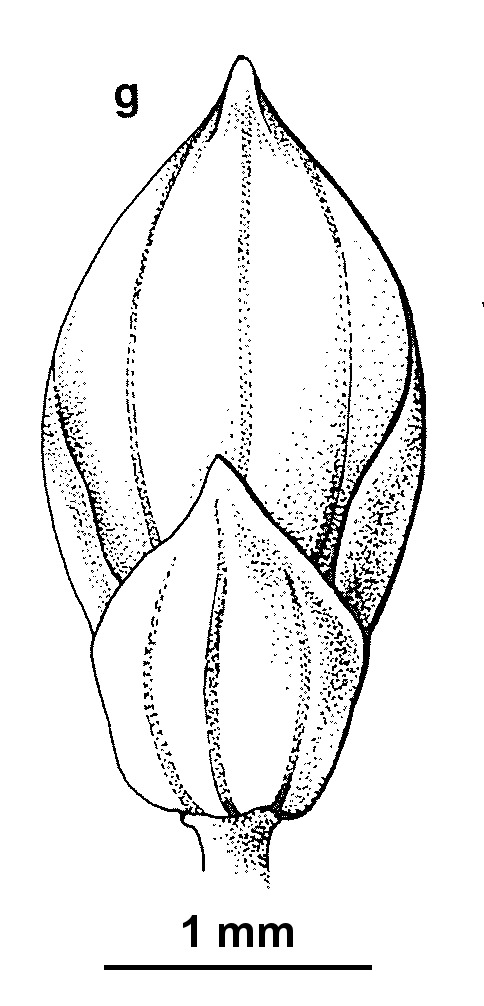Paspalidium jubiflorum
(Trin.) Hughes Warrego Summer-grassTufted, rhizomatous or stoloniferous perennial. Culms ascending or erect, to 90 cm high. Leaves glabrous; blade flat, slightly scabrous, to 20 cm long and 9 mm wide; ligule 0.5–1.2 mm long. Panicle 12–35 cm long; branches (mostly 1.5–4 cm long) remaining loosely appressed to the glabrous main axis. Spikelets 2.4–3.2 mm long; lower glume broadly ovate, c. 1.5 mm long, 3–5-nerved, the nerves connected by fine transverse veins toward the apex; upper glume ovate, 5-nerved, slightly shorter than the spikelet; lower lemma 5-nerved, as long as the spikelet, its palea rudimentary or lacking; upper lemma ovate, as long as or subequal to the spikelet, minutely pointed apically, hardened, transversely ridged toward base, margins pale, papery, laying flat over and largely concealing palea; palea sub-equal to lemma, hardened, granular. Flowers Nov.–Jun.
MuM, Wim, GleP, VVP, VRiv, MSB, RobP, MuF, GipP, OtP, Gold, NIS. Also WA, NT, SA, Qld, NSW. Mainly occurs on alluvial clays of the Murray River and its overflows (e.g. Lake Powell, Hattah Lakes, Lindsay River) downstream of about Rutherglen. Collections from near Melbourne (Flemington and Little River) are undoubtedly due to inadvertently transported seed.
Walsh, N.G. (1994). Poaceae. In: Walsh, N.G.; Entwisle, T.J., Flora of Victoria Vol. 2, Ferns and Allied Plants, Conifers and Monocotyledons, pp. 356–627. Inkata Press, Melbourne.
 Spinning
Spinning

